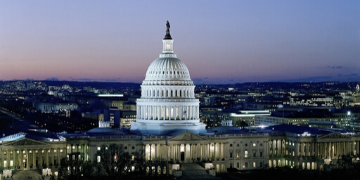Health Equity
Medicaid Enrollment Touches 39% of the Residents of The District of Columbia; DC’s 70/30 FMAP is Vital for the Maintenance of Health & Human Services
A reduction in the District’s FMAP would not lead to long-term government savings and would have a ripple effect throughout the entire health system in the DMV, crippling access to care for not only Medicaid beneficiaries but also all those who live, work, and visit the District of Columbia, including members of Congress and their staffs.
.png?sfvrsn=9ac2d21b_0)
Why does DC receive an Enhanced FMAP Rate?
The DC FMAP rate of 70% established by the Revitalization Act resulted from bipartisan analysis, discussion, and negotiation by Congressional leadership aiming to balance fairness with the District’s restricted ability to generate revenue. Congress recognized that the District of Columbia faces unique financial challenges due to its non-state status and the significant amount of federally-owned land within its boundaries. The District is unable to tax non-residents’ earnings, so these workers pay no taxes to support the infrastructure and services, such as roads, public safety and emergency services that they benefit from in the District. The District is also unable to tax up to 40% of the real property within its borders due to statutory restrictions.
Why are we concerned about DC's FMAP now?
Members of Congress have proposed reducing the DC FMAP to the statutory minimum for all other states, which is currently 50% (but could be reduced even more). Such a change would impact every physician and every practice, regardless of type, location, and payers contracted. Even practices who take no insurance will not be able to send patients for specialist care, hospital admissions, or other types of care.
What can MSDC members do?
- If you know a member of Congress or staffer, reach out to them and share how DC cuts will hurt your patients.
- Share your relationships and outreach with hay@msdc.org so we can help coordinate advocacy efforts.
- Email hay@msdc.org if you would like to be paired with a physician member of Congress office and trained by MSDC staff on how to reach out.
Resources
- DC FMAP cut fact sheet
- California Medical Association fact sheet on Medicaid cuts
- MSDC and healthcare association letter to Congress arguing against DC FMAP changes.
- MSDC original story on Medicaid changes.
News, Statements, and Testimony on Health Equity Issues
Congress Passes COVID 3.5 Bill and Pivots to CARES Act Part 4

On Thursday, the House joined the Senate in passing the "Paycheck Protection Program and Health Care Enhancement Act", more commonly known as COVID 3.5. The legislation is the latest federal attempt to stimulate the economy and provide support to the health care sector. Yet even as it awaits President Trump's signature, Congress is already pivoting to the next COVID-19 bill, which is expected to build upon the CARES Act.
The American Medical Association published a comprehensive guide to the legislation (AMA summary of COVID 3.5 bill) but a few highlights include:
- Additional funds for the PPP to increase the number of loans for businesses, with a percentage set aside for community lenders
- $25b for COVID-19 testing with a variety of carve-outs including $825m for Community Health Center
- An additional $75b in funds for hospitals to cover losses
The next bill being considered by Congress is at the moment less structured but already the subject of intense political debate. One issue MSDC hopes is included in the new legislation is "catch-up" funding for the District. Under the original CARES Act, the District was designated for territorial funding, not state-level funding, which left it with $700m less in federal support funding for COVID-19 relief. MSDC is involved in advocacy efforts to secure equal funding for the District with states, as the District's public health function is more in line with states than territories.

Leave a comment